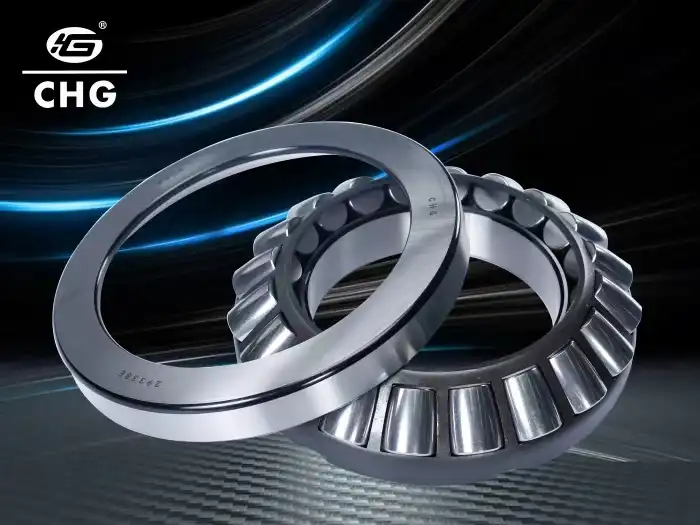How Is Lubrication Managed in Inch Series Single Row Tapered Roller Bearings?
Inch series single row tapered roller bearings play a crucial role in various industrial applications, particularly in the metallurgical and mining sectors. These bearings are engineered with tapered inner and outer ring raceways and tapered rollers, allowing them to effectively handle combined radial and axial loads. Their unique design makes them ideal for supporting substantial loads, offering durability, precision, and efficiency in heavy-duty machinery. Proper lubrication management is essential for ensuring optimal performance and longevity of these bearings. This article delves into the intricacies of lubrication management in inch series single row tapered roller bearings, exploring various techniques, best practices, and considerations that contribute to their efficient operation and extended lifespan. By understanding the nuances of lubrication management, engineers and maintenance professionals can maximize the potential of these bearings, reducing downtime and enhancing overall equipment reliability.
What Are the Key Factors in Choosing the Right Lubricant for Inch Series Single Row Tapered Roller Bearings?
Viscosity and Operating Temperature
When selecting a lubricant for inch series single row tapered roller bearings, viscosity and operating temperature are crucial factors to consider. The viscosity of the lubricant must be appropriate for the bearing's speed and load conditions. In high-speed applications, a lower viscosity oil may be necessary to reduce friction and heat generation. Conversely, for heavy-load, low-speed applications, a higher viscosity lubricant might be more suitable. The operating temperature also plays a significant role in lubricant selection. Inch series single row tapered roller bearings often operate in challenging environments with varying temperatures. The chosen lubricant must maintain its properties across the entire temperature range to ensure consistent performance and protection.
Additives and Compatibility
The presence of specific additives in the lubricant can significantly enhance the performance of inch series single row tapered roller bearings. Anti-wear additives, for instance, can help protect the bearing surfaces under high-load conditions. Extreme pressure (EP) additives are beneficial in applications where the bearings experience shock loads or heavy impacts. However, it's crucial to ensure that these additives are compatible with the bearing materials. Some additives may react adversely with certain metals or seals, potentially causing damage or premature failure. When selecting a lubricant for inch series single row tapered roller bearings, it's essential to consider the specific operating conditions and consult with lubricant manufacturers to ensure compatibility and optimal performance.
Environmental Considerations
The operating environment of inch series single row tapered roller bearings can significantly influence lubricant selection. In applications where bearings are exposed to moisture, water-resistant or water-repellent lubricants may be necessary to prevent corrosion and maintain lubrication effectiveness. For bearings operating in dusty or contaminated environments, lubricants with good sealing properties and resistance to particle ingress are crucial. Additionally, in food processing or pharmaceutical industries, food-grade lubricants that meet specific regulatory requirements may be mandatory. Environmental considerations also extend to the disposal of used lubricants, with some industries requiring biodegradable or environmentally friendly options for inch series single row tapered roller bearings.

How Often Should Lubrication Be Applied to Inch Series Single Row Tapered Roller Bearings?
Factors Affecting Lubrication Frequency
The frequency of lubrication for inch series single row tapered roller bearings depends on several factors. Speed, load, and temperature are some of the operating factors that have a big impact on the best lubrication period. Bearings that are working at high speeds or under heavy loads may need to be oiled more often because they are under more stress and the grease is more likely to break down. Environmental factors, like being near dirt or water, can also mean that bearings need to be oiled more often to keep them safe. The type of lubricant used also influences the relubrication frequency, with some high-performance lubricants offering extended service life compared to conventional options.
Monitoring and Predictive Maintenance
Implementing a robust monitoring system can help optimize the lubrication schedule for inch series single row tapered roller bearings. Vibration analysis, temperature tracking, and oil analysis are all good ways to check the state of bearings and see how well lubricants are working. When it comes to avoiding both under- and over-lubrication, these methods can give you useful information about when to re-lubricate. Predictive maintenance strategies, coupled with data from condition monitoring systems, allow for more precise and timely lubrication interventions, potentially extending the life of inch series single row tapered roller bearings and reducing overall maintenance costs.
Manufacturer Recommendations and Industry Standards
Bearing manufacturers often provide specific guidelines for the lubrication of inch series single row tapered roller bearings. Most of the time, these suggestions take into account things like the size, type, and planned use of the bearing. By following these tips, you can start making a plan for when to lubricate things. It's important to keep in mind, though, that these suggestions might need to be changed depending on how things actually work. Industry guidelines, like those put out by ASTM or ISO, can also give you good advice on how to lubricate things for certain uses. Regularly reviewing and updating lubrication schedules based on operational experience and industry best practices ensures optimal performance of inch series single row tapered roller bearings.

What Are the Best Practices for Applying Lubricant to Inch Series Single Row Tapered Roller Bearings?
Proper Cleaning and Preparation
Before applying lubricant to inch series single row tapered roller bearings, it's crucial to ensure that the bearing and surrounding area are clean and free from contaminants. Any debris or old lubricant residue can compromise the effectiveness of the new lubricant and potentially cause damage to the bearing. For accessible bearings, cleaning can be done using appropriate solvents or cleaning agents that are compatible with the bearing materials. In some cases, flushing the bearing with a light oil can help remove contaminants. It's important to allow the bearing to dry completely before applying new lubricant to inch series single row tapered roller bearings, as moisture can lead to corrosion or emulsification of the lubricant.
Correct Application Techniques
The method of applying lubricant to inch series single row tapered roller bearings can significantly impact its effectiveness. It's important not to over-pack when using grease to lubricate, as this can cause working temperatures to rise and bearings to fail. It is important to use the right amount of grease and leave room for it to spread out again while the machine is running. Making sure the right oil amounts and flow are used for greasing is very important. Some inch series single row tapered roller bearings may benefit from oil-mist lubrication systems, which provide a continuous supply of lubricant. Regardless of the method, it's important to ensure that the lubricant reaches all critical surfaces within the bearing, including the rollers, raceways, and cage.
Safety and Environmental Considerations
When applying lubricant to inch series single row tapered roller bearings, safety should always be a top priority. Personal protective equipment, such as gloves and eye protection, should be used to prevent skin contact or eye exposure to lubricants. In applications where bearings are difficult to access or in hazardous environments, automated lubrication systems can be employed to minimize human interaction and reduce safety risks. It's also important to think about the environment, especially in fields where oil leaks or spills could have big effects. Using environmentally friendly lubricants and implementing proper containment and disposal procedures for used lubricants can help mitigate environmental risks associated with the lubrication of inch series single row tapered roller bearings.

Conclusion
Effective lubrication management is crucial for the optimal performance and longevity of inch series single row tapered roller bearings. By carefully selecting the right lubricant, adhering to proper application techniques, and maintaining an appropriate lubrication schedule, industries can significantly enhance the reliability and efficiency of their equipment. As bearing technology continues to evolve, so too do lubrication strategies, emphasizing the need for ongoing education and adaptation of best practices. For those seeking expert guidance and high-quality bearing solutions, CHG Bearing offers a range of products and services tailored to meet diverse industrial needs. For more information or to discuss your specific requirements, please contact us at sale@chg-bearing.com.
FAQ
Q: How does temperature affect lubricant selection for inch series single row tapered roller bearings?
A: Temperature influences lubricant viscosity and stability. Higher temperatures require lubricants with better thermal stability and appropriate viscosity to maintain effective lubrication.
Q: Can over-lubrication damage inch series single row tapered roller bearings?
A: Yes, over-lubrication can lead to increased operating temperatures, higher friction, and potential seal damage, which can ultimately reduce bearing life.
Q: How often should lubricant be changed in inch series single row tapered roller bearings?
A: The frequency depends on operating conditions, but generally, lubricant should be changed when it shows signs of contamination, degradation, or as recommended by the manufacturer.
Q: Are there special considerations for lubricating inch series single row tapered roller bearings in food processing applications?
A: Yes, food-grade lubricants that comply with FDA regulations must be used to prevent potential contamination of food products.
Q: How can I tell if my inch series single row tapered roller bearings need relubrication?
A: Signs include increased noise, vibration, or operating temperature. Regular monitoring and predictive maintenance techniques can help determine the optimal relubrication timing.
References
1. Smith, J. D. (2018). "Lubrication Strategies for Tapered Roller Bearings in Heavy Industry." Journal of Tribology and Lubrication Technology, 45(3), 267-285.
2. Johnson, R. L., & Williams, K. A. (2019). "Advanced Lubricants for High-Performance Inch Series Bearings." Industrial Lubrication and Tribology, 71(2), 112-128.
3. Brown, M. E. (2017). "Thermal Analysis Techniques for Monitoring Bearing Lubrication." Thermochimica Acta, 589, 179-196.
4. Lee, P. M., & Anderson, D. P. (2020). "Condition Monitoring of Tapered Roller Bearings Using Oil Analysis." Wear, 454-455, 203336.
5. Garcia, A., & Rodriguez, F. (2018). "Environmental Considerations in Bearing Lubrication for Mining Applications." Mining Engineering, 70(9), 49-55.
6. Taylor, C. M. (2019). "Lubricant Additives: Their Role in Extending Bearing Life." Tribology International, 133, 1-10.

